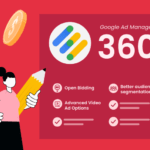Unleash your earning potential with a reliable and effective display ad network! Discover our list of the top 18 display ad networks to maximize your ad revenue.
Display advertising is undeniably popular in the online advertising space. If you want to showcase them on your website or app, you’ll need a reliable display ad network.
Whether you’re a seasoned blogger, a booming news outlet, or a niche content creator, this list holds the key to unlocking new avenues for monetization.
But before jumping into the first network you find, take the time to research and ensure you know what to look for.
What is a Display Ad Network?
A display Ad network, also called an Advertising Network or Ad Network, connects advertisers with website publishers who have space available for advertisements. It acts as a middleman, making it easier for advertisers to buy display ads and for publishers to sell their advertising spots.
Display ads are graphical advertisements that appear as banners, images, videos, or rich media on websites. Advertisers use these ads to promote their products, services, or brands and reach a larger audience. These ads are strategically placed on websites that are relevant to the target audience of the advertisers.
Why should you use Google Display Network (GDN)?
Google Display Network, or GDN, has a great reach, perfect for any level marketer. It helps place ads on websites, apps, and other platforms, making it a great tool to reach a wider audience.
It is noted that a publisher should use GDN over other tools, especially when their goal is to build brand awareness in a cost-effective manner. It even lets publishers hand-pick website placements that best fit the website visitors’ experience.
With such a vast library, no matter what the website content is focused on or what the keyword is, everyone is bound to find a match for their needs with Google Display Ad Network or GDN.
What is the Cost to Use Google Display Network (GDN)?
Google Display Network, like Google Search Network, runs on a live-auction system and charges the publisher every time someone clicks on their ad. The average Cost-per-Click (CPC) on GDN is less than $1, but it largely depends on the publisher’s budget and the industry.
For example, competitive industries like finance, insurance, and healthcare produce a higher CPC than other sectors. This is why picking the right niche to publish on the internet is imperative to earning higher revenue.
How does Google Display Network (GDN) work?
The GDN can display ads on websites or apps, matching the exact criteria given to it. This is how it happens:
Interest-Based Audience Targeting
Interest targeting ensures that a particular ad is only shown to audiences who are interested in those products or services – customers or fellow publishers who work in related fields.
GDN offers 5 main interest-targeting categories:
- Affinity Audiences: this includes groups based on interests or hobbies, like – “running enthusiasts”, “book lovers”, “rom-com fans”, etc.
- Custom Affinity Audiences: It’s a custom audience group created using keywords/URLs.
- In-Market Audiences: It’s a group of people already looking for the publisher’s product or service, aka an audience with high-purchase intent.
- Placement Targeting: When the publisher wishes to display their ads on only a few specific websites, that is when this targeting comes into effect. The ads are published on the websites using placement URLs.
- Topic Targeting: In this type of targeting, the ads are only displayed on web pages about the topics specified by the publisher. They may or may not be related to what the viewer had searched for at that moment.
Demographic-Based Audience Targeting
Demographic-based targeting narrows the audience and allows publishers to reach people of specific ages, genders, locations, and such.
Publishers can stack interest-based and demographic-based targeting to reach an even more specific audience pool, who are sure to engage with the ads. But be aware – the more specific ad targeting factors, the fewer people view the ads.
So, it is advised to test different combinations to see which audience pool works the best for business.
Difference Between Google Display Ad Network and Google Search Network
The main thing that differentiates the two Google tools is where the publisher’s ad is finally displayed.
The Google Search Network is a collection of websites and apps where the ads can be shown, based on Google search results. It shows results by exactly matching the searched keywords, or phrases related to it on the search engine result page.
On the other, Google Display Network Ads showcase ads on other websites, apps, or videos. Here’s one of the Google display network ad examples:
Source: SEMRush
So, in summary, Google Display Network (GDN) and Google Search Network differ in the following ways:
| Google Display Network | Google Search Network |
| Targets, audience, interests, and websites | Target keywords that were entered in the search bar |
| Better for creating brand awareness among the viewers | Captures higher-intent audience |
| Ads are published on other people’s websites, apps or videos | Ads are published on the search result page as “Sponsored” |
18 Best Display Ad Network for Publishers in 2023
1. AdPushup

AdPushup is one of the biggest display ad networks. It serves a bigger and wider purpose instead. AdPushup defines itself as a publisher-focused platform that helps in revenue optimization as its features are perfectly aligned towards fulfilling that purpose, thus catering to publishers’ needs.
If you’re just starting out with ad monetization, AdPushup would be a perfect fit. They have no minimum traffic requirement, but they exclusively work with websites already generating $5,000/month in ad revenue.
AdPushup offers an extensive range of tools, neatly divided into three pricing plans based on revenue sharing. These plans come packed with valuable features. You’ll gain access to Google ADX and AdSense, enabling you to tap into their advertising networks. It also provides managed header bidding, comprehensive revenue reports, ad optimization, and efficient management functionalities, among other offerings.
2. Google AdSense
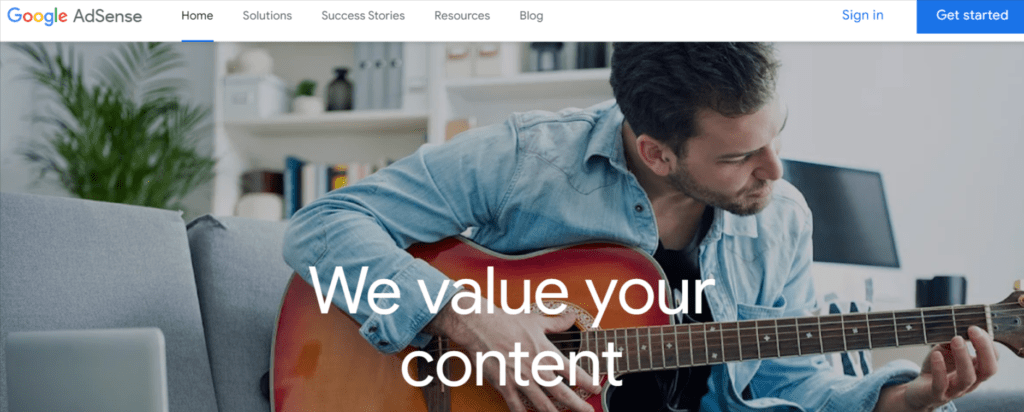
Google AdSense is a mammoth in the world of display ad networks as it reaches far and wide in the digital advertising space.
With nearly 2 million advertisers and billions of customers, its impact is undeniable. And that is not because it is highly capable of driving traffic to websites with unrivaled effectiveness.
As one of the foremost ad networks globally, Google AdSense upholds rigorous quality standards. While these standards may appear demanding at times, they exist to ensure that only committed advertisers engage with Google AdSense.
Google’s influence extends beyond websites; it extends its grasp on apps and various mobile-based programs, broadening your reach to a vast audience.
3. Media.net
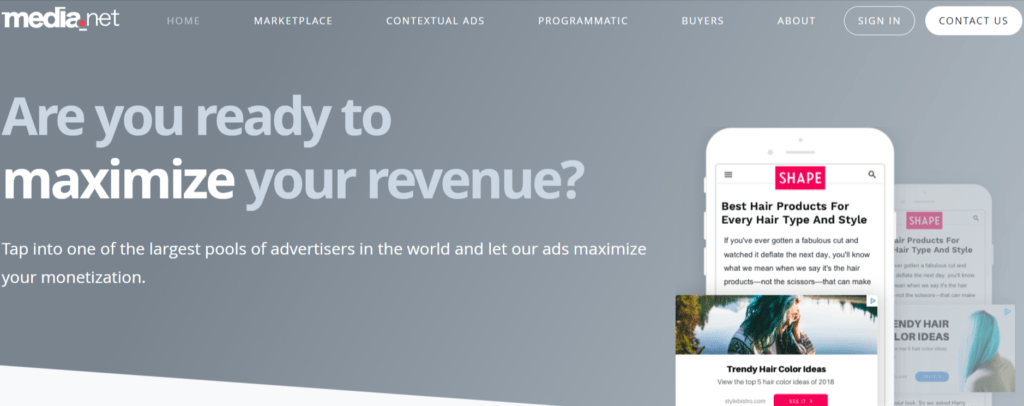
Media.net stands out as a prominent ad network with access to premium contextual ad demand sourced from the Yahoo! Bing Network. Also, the platform seamlessly integrates with various DSPs, AMPs, DMPs, and other third-party services, guaranteeing exceptional fill rates across all publishers.Employing cutting-edge ad technology such as server-side ad insertion and real-time bidding, Media.net ensures top-notch delivery and remarkable results for campaigns. Additionally, the platform prioritizes client control and implements ad safety measures to safeguard users against ad fraud.
4. mMedia
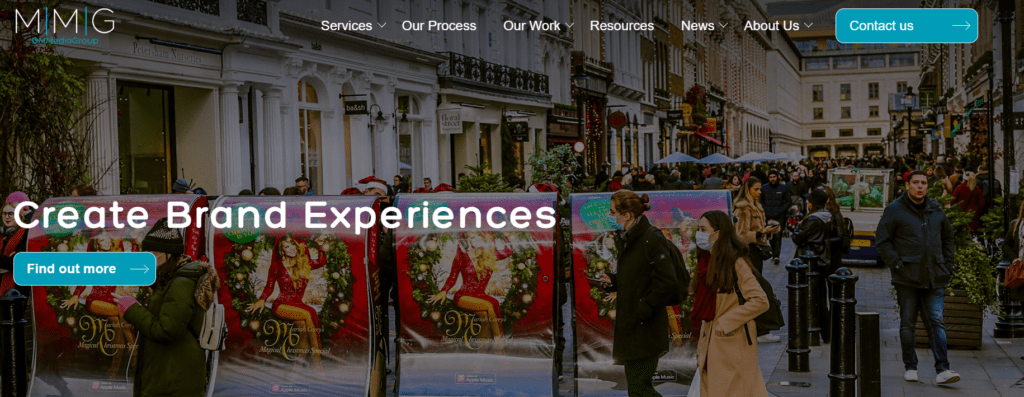
mMedia stands out as an excellent choice among display networks, particularly for companies venturing into this advertising space.
What sets mMedia apart is its lack of a minimum investment requirement for advertisers. With as little as $20, you can embark on your advertising journey.
While it’s true that such a modest investment may not yield optimal results, it remains a viable option. In practice, your minimum investment will depend on the bidding landscape within your industry for specific ads.
However, even if your aim is to dominate a particular ad type for a specific customer segment, mMedia can still deliver remarkable outcomes with investment below the industry average.
5. BidVertiser
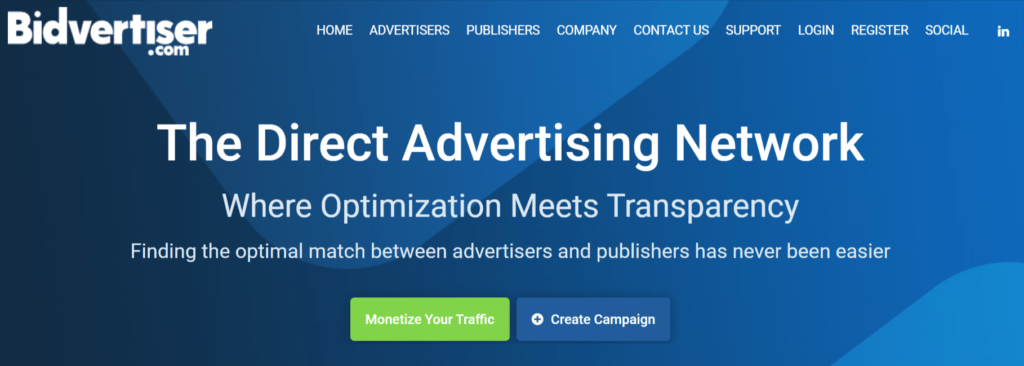
BidVertiser, a display Ad network hailing from Israel, sets itself apart with its rich arsenal of in-house tools. This global platform proudly serves over 80,000 clients, encompassing both publishers and advertisers.
While BidVertiser doesn’t provide explicit guidelines for monthly website traffic, they emphasize the importance of high-quality traffic, steering clear of purchased clicks from traffic exchanges. They seek websites that exhibit quality content, a minimum of three months of activity, and regular updates to their pages.
Though the criteria may appear stringent, the rewards with BidVertiser are abundant. When it comes to BidVertiser, expect nothing less than impressive ad fill rates and the prowess of AI-driven ad optimization tools. They also offer omnichannel monetization, spanning websites and mobile apps, ensuring comprehensive reach.
6. Yahoo Ads
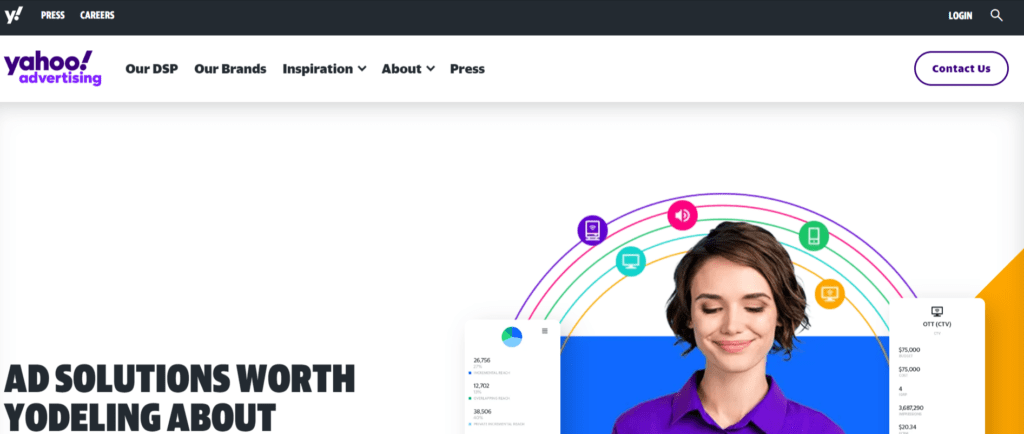
While Yahoo’s web browser may not enjoy the same level of popularity as Google’s, it thrives in the ad tech domain. Within its platform, Yahoo encompasses both an SSP and a DSP, offering advertisers and publishers a comprehensive suite of tools.
Yahoo accommodates a wide array of transaction models, ranging from header bidding to direct programmatic ads.
The platform consistently maintains a high level of ad demand, resulting in commendable fill rates. Moreover, Yahoo’s publishers have access to detailed reports and a range of ad optimization tools.
7. Apple Advertising
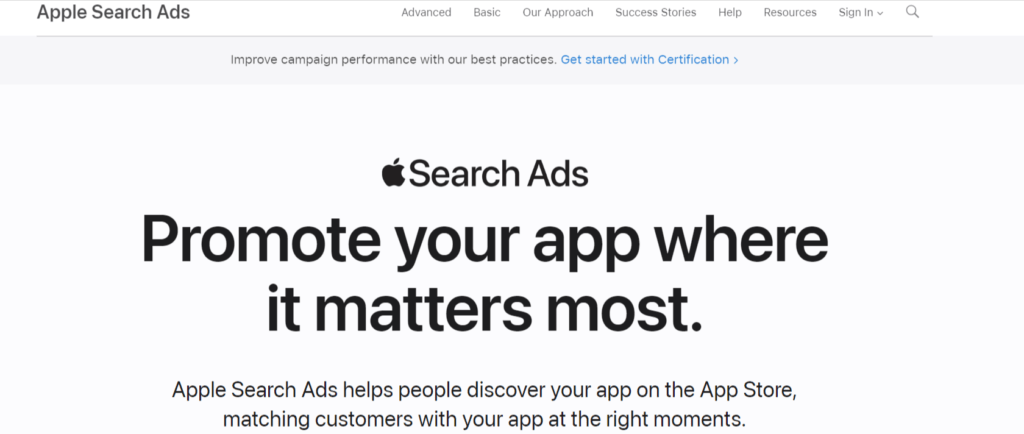
Apple Advertising stands tall among the frontrunners in mobile display advertising. This position is attributed, in part, to Apple’s dominion over the world’s largest app store. This advantage empowers developers to effortlessly monetize their apps by incorporating ads.
This streamlined system not only facilitates revenue generation for developers but also opens up avenues to engage with a fresh influx of potential customers who may have remained oblivious to your website’s existence.
Furthermore, Apple Advertising boasts an intuitive bidding and targeting system, empowering advertisers to meticulously customize the appearance of their ads. This feature allows for precise selection and placement.
8. Epom
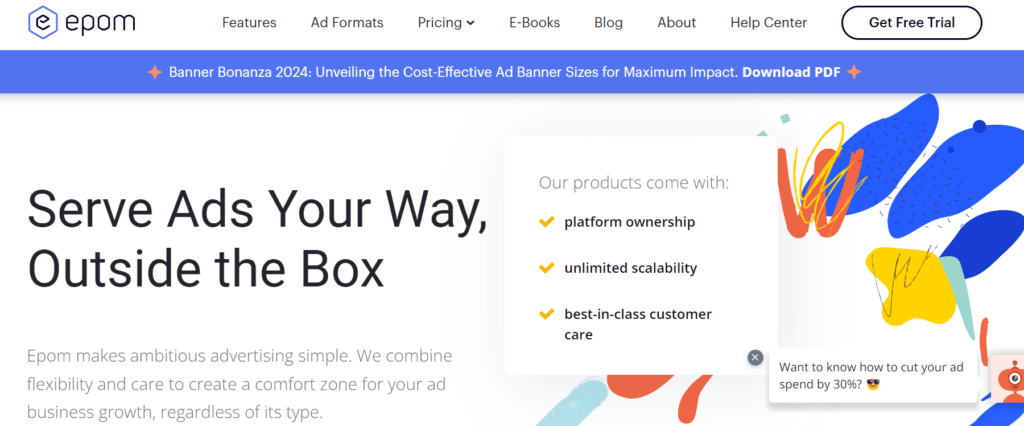
Epom, an excellent ad network for beginners, offers a free trial to advertisers. It boasts a comprehensive set of fundamental features, essential for any reliable ad network. These include in-depth analytics and performance tracking, ad optimization tools, real-time bidding support, and more.
Epom excels in serving ads across diverse devices, operating systems, and platforms. Whether you seek to monetize your mobile app, website, or video content, Epom provides the necessary tools and resources.
9. AdMaven
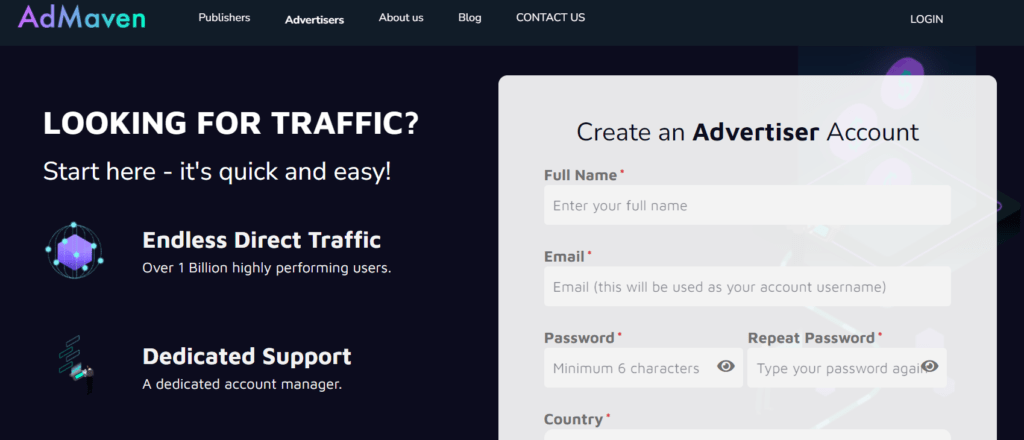
AdMaven is a well-known advertising network offering omnichannel support for both web and mobile monetization. While the platform offers restricted ad types, it ensures high fill rates across various devices, operating systems, and applications.
Some notable features of AdMaven include anti-AdBlock technology, robust fraud detection and protection mechanisms, and access to a dedicated support team. Unlike many other platforms prioritizing programmatic advertising, AdMaven serves as a direct-first platform, catering to advertisers seeking direct ad placements.
10. Airnow Media

Airnow Media stands as a key component display Ad Network within the Airnow monetization platform. It operates as a demand-side platform, collaborating as an advertising partner for mobile-based advertisers.
Its primary focus lies in delivering display ads, along with other formats, across mobile apps and browsers. Notably, Airnow Media extends its support to include CTV advertising, broadening its reach.
With a vast network comprising over 150,000 opt-in apps, Airnow Media functions as a programmatic ad platform, incorporating real-time bidding.
It equips users with a range of tools designed to enhance their advertising endeavors. These include fully customizable ad templates, precise audience targeting options, and the ability to monitor and report real-time performance with intricate detail.
11. Adknowledge
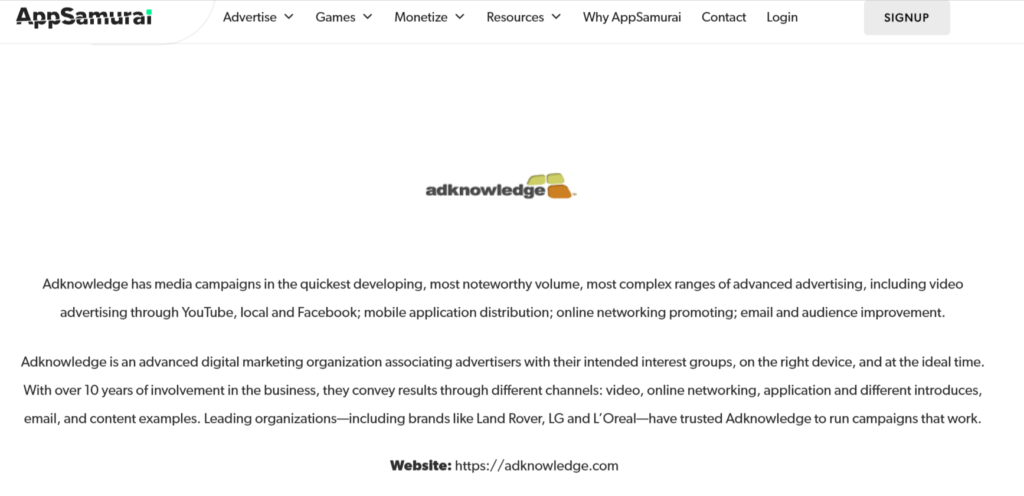
While Adknowledge may not boast the same size as certain ad networks, it remains a formidable avenue for reaching new customers.
Versatility stands tall as Adknowledge’s key allure. It empowers businesses to advertise across video sites, social networks, and mobile apps, widening their promotional reach.
Moreover, Adknowledge offers a distinctive proprietary system to gauge customer interest. This valuable feature enables swift, effortless, and precise targeting of users within your specific customer demographic.
12. Leadbolt
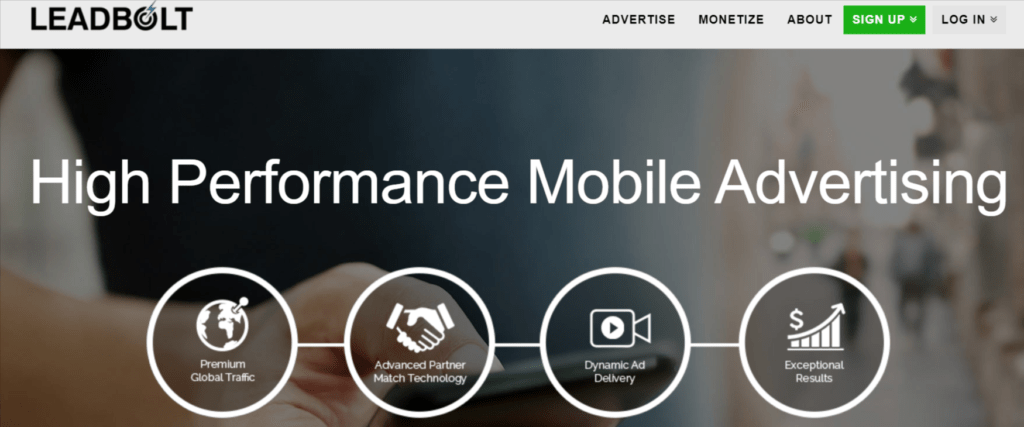
Leadbolt stands out as an acclaimed advertising partner and app monetization solution. Its SDK offers developers a seamless and uncomplicated integration process for monetizing their mobile apps through ads.
The vast network of Leadbolt comprises numerous advertisers, with impressive case studies showcasing potential eCPM growth of up to 400%. Moreover, the platform’s highly customizable ads empower you to optimize your app’s monetization to the fullest. With a diverse range of ad placements and formats at your disposal, Leadbolt maximizes your app’s earning potential.
13. Vibrant Media

Vibrant Media is a powerful ad network offering publishers unparalleled control over their ad inventory. With its array of features, publishers can dictate the maximum number of ads per page, ad types and specific advertisers, and access comprehensive performance reports, among other capabilities.
Additionally, Vibrant Media is renowned as a pioneer in contextual advertising. Leveraging advanced natural language processing technology, the platform seamlessly matches ads to on-page content, optimizing ad yield and relevance in the process.
14. Infolinks

Infolinks is an exceptional advertising network, particularly renowned for its emphasis on display advertising. With a keen focus on overcoming issues like banner blindness, the platform introduces innovative display ad formats such as inCube, which presents ads within a dynamic 3D cube interface.
Infolinks sets itself apart with intent-oriented targeting options, ensuring ads are precisely tailored to user interests and behaviors. Moreover, the platform offers real-time performance tracking features, empowering publishers to swiftly fine-tune and optimize their campaigns for maximum effectiveness.
15. ReklamStore
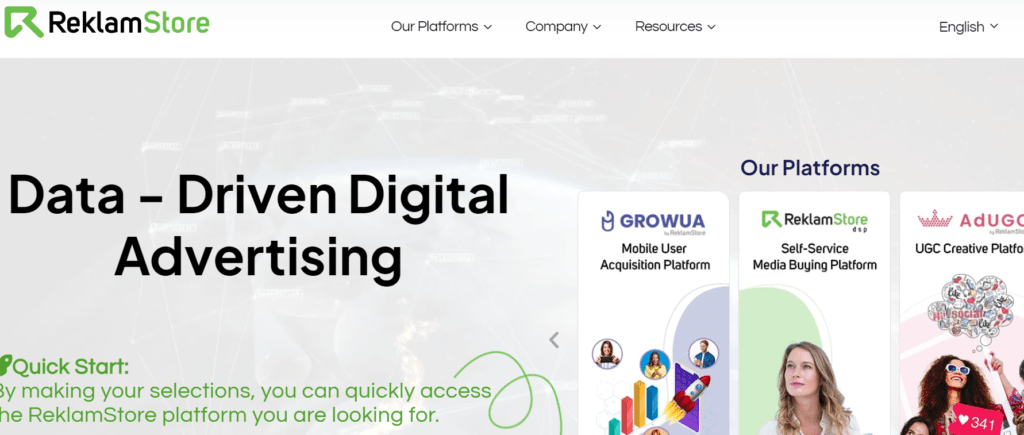
ReklamStore is a user-friendly self-serve ad network, seamlessly integrating with a number of DSPs, SSPs, and top-tier ad exchanges to guarantee a premium ad supply and demand ecosystem.
Among its key features, ReklamStore boasts advanced header bidding technology, real-time ad performance and earnings reports, sophisticated audience targeting capabilities, and robust remarketing tools. ReklamStore also supports a variety of display ad formats, enhancing flexibility and creative options for advertisers.
16. MoneTag (Formerly PropellerAds)
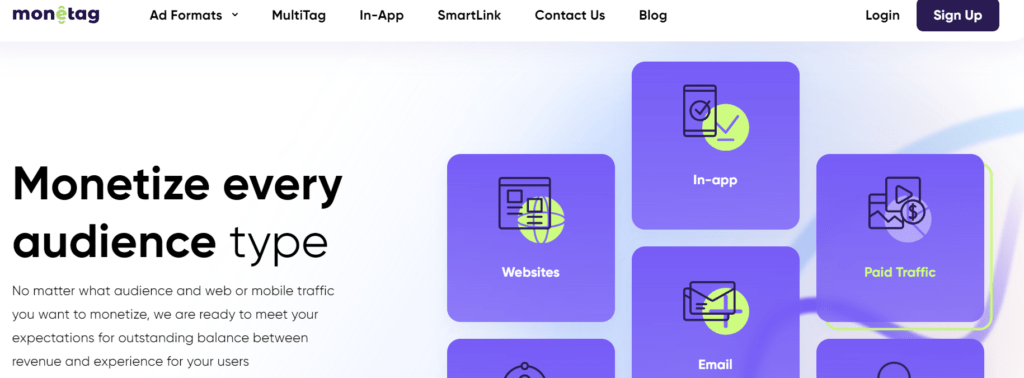
Monetag, early called PropellerAds, is a prominent display ad network known for its rigorous content control measures. Every campaign undergoes manual vetting to ensure utmost quality and safety. Additionally, Monetag promises high ad fill rates and ad yield for publishers.
Moreover, Monetag offers essential features expected from a top-tier ad network, like comprehensive analytics, real-time reporting capabilities, robust ad optimization tools, compatibility with AdSense, advanced AdBlock bypass technology, and additional functionalities to support advertisers and publishers alike.
17. Clickadu
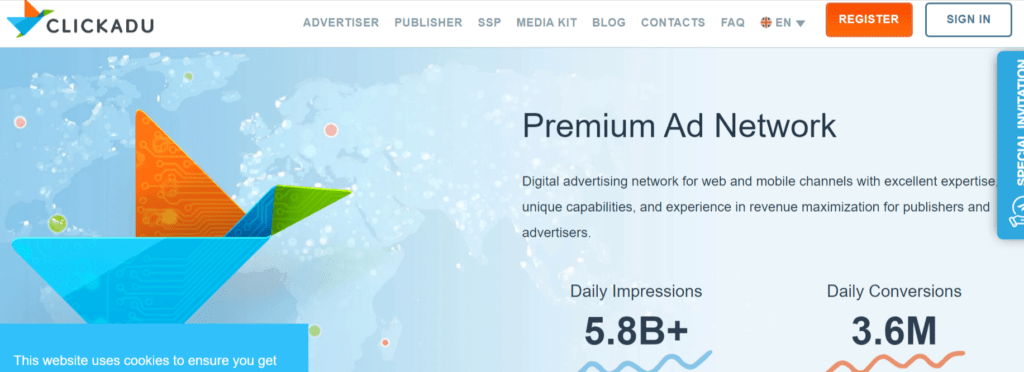
Clickadu is an online advertising platform with nearly a decade of experience in the industry. With a global network of publishers and advertisers, the platform ensures a high fill rate and offers some of the most competitive CPMs available.
With Clickadu, publishers gain access to high-quality ads from exclusive advertisers through an intuitive self-serve platform. It also offers automated payouts, comprehensive analytics, and a suite of optimization and management tools to facilitate ease of use and maximize revenue potential.
18. TargetVideo Premium Ad Marketplace
TargetVideo is a great online video platform that offers robust solutions for video hosting, management, distribution, and playback through its lightweight, low-latency HTML5 player. TargetVideo also features its Premium Ad Marketplace, serving as an ad network for publishers.
It even serves as an official Google MCM partner, bridging the gap between Google ADX and the publishers who couldn’t necessarily meet Google’s traffic requirements but still wish to monetize through it.
Moreover, the platform offers essential ad network tools such as analytics, ad optimization, and management, along with dedicated support, ensuring publishers have everything they need for successful ad monetization.
How to Select the Best Display Ad Network?
When it comes to choosing the right display Ad network that suits your unique requirements, several important factors need careful consideration.
Let’s look into the key factors that can assist you in navigating through this process smoothly:
Define your Advertising Goals
Determine your objectives and what you hope to achieve through display advertising. Are you looking to increase brand awareness, drive website traffic, generate leads, or boost conversions? Understanding your goals will help you evaluate ad networks based on their ability to deliver results aligned with your objectives.
Identify your Target Audience
Know your target audience and their demographics, interests, and online behavior. Look for ad networks that offer targeting options aligned with your audience profile. The ability to reach the right audience is crucial for effective advertising.
Consider Network Reach and Inventory
Evaluate the ad network’s reach and the size and quality of its publisher network. A larger network can provide access to a broader audience, while a network with niche publishers may be more suitable for targeting specific demographics or interests. Additionally, consider the types of websites in the network to ensure they align with your brand and target audience.
Review Ad Formats and Creative Options
Assess the ad formats and creative capabilities offered by the ad network. Consider whether they support the types of ads you want to display, such as static banners, rich media, videos, or interactive formats. Look for features that allow you to create engaging and visually appealing ads.
Evaluate Targeting and Optimization Features
Examine the targeting options and optimization features provided by the ad network. Look for advanced targeting capabilities that allow you to reach specific audiences based on demographics, interests, geolocation, or browsing behavior. Optimization features like real-time bidding (RTB) and audience segmentation can help improve ad performance.
Analyze Pricing Models and Costs
Understand the pricing models used by the ad network, such as CPM, CPC, or CPA. Compare the costs and value you can expect from different networks. Consider factors like minimum spending requirements, transparency in pricing, and whether the pricing aligns with your budget and expected return on investment (ROI).
Now that you know about some of the best display ad networks, let’s take a look at how you can optimize your ads for display ad network to maximize your ad revenue
Steps to Optimize Your Ads for Google Display Network (GDN)
To make the most out of your ad stacks, make sure the ads are optimized for GDN. These are some of the most important parameters to ensure your ads reach the correct audience and drive performance:
Size of Ad Images
Display ads majorly depend on the images used. They are what runs the narrative and communicate to the viewer what your business is all about. So, making sure that the sizing of these images is correct for the ads is very important.
According to Google, the image size guidelines are:
OR
Image Quality Should be High
For great ads, make sure that the images used are of high quality, aka not blurry, overly filtered, upside-down, or bordered.
| Do | Don’t |
| Ensure the image is the center of focus | Overlay your logo, text, or graphics over the photo |
| Use one image at a time (not collages) | No Collages |
| Use physical settings with natural light and shadow | Use bright or flashy buttons |
| Use Logos with a clear or white background | Use Logos with a colourful background |
Google’s Text Recommendation
The most important rule of thumb in advertising is to use clear and simple language to deliver your message.
| Do | Don’t |
| Give clear instructions, like – “Pay with Credit Card”, “Buy Here” | Punctuate the end of short headings |
| Make text easy to read and understand | Use all caps |
| Clearly highlight the value offered | Use the same copy for headlines and description |
| Avoid generic messaging | Use clickbait |
| Write a description of under 90 characters to avoid cutoffs in certain ad layouts | Use your business’ name in the headlines |
And these are some ways you can create the most optimized ads for your business running on Google Display Network.
The Bottom Line on Display Ad Network
Still reading? Well, believe it or not, you are more serious than ever to get started with display advertising.
That said, why not give AdPushup a try?
AdPushup offers comprehensive support for placing display ads on your website.
With advanced features like detailed analytics, a wide range of supported ad formats, and real-time bidding, it handles the work to ensure a steady flow of ad revenue.
You can focus on running your publishing business while AdPushup takes care of the rest.
Just give it a try once.
FAQs – Display Ad Network
Some popular Display Ad Networks for publishers include AdPushup, Google AdSense, Epom, BidVertiser, etc.
Consider factors such as ad network reputation, ad formats offered, payout rates, targeting options, support, and the network’s relevance to your website’s niche.
Yes, many publishers use multiple ad networks to maximize their revenue potential. However, it’s important to carefully manage ad placements and avoid overwhelming the user experience.

Deepak has a keen eye for detail and a deep understanding of the ad tech landscape. Whether it’s through in-depth articles, thought-provoking insights, or compelling storytelling, he’s dedicated to helping people navigate the complex world of ad tech with the simplicity of his words.


